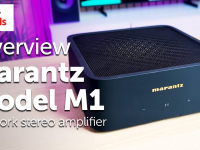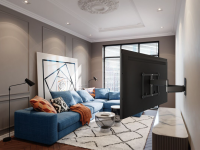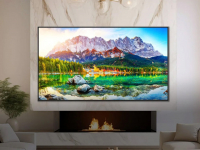
Very rarely have three little letters meant so much. Introducing the HD28 DSE – this is no ordinary projector, this is a “DARBEE Special Edition” projector…
Projectors, for the uninitiated, offer a cinematic, immersive experience not possible on a TV of similar price. Often petite in dimensions, they can produce an image that belittles their compact nature. Where they used to be exclusive for the high rollers, home projectors have now become an affordable option to those of us in the real world. But should I pick the Optoma HD28 DSE over any of the other projectors available?
For starters, the Optoma HD28 DSE produces a mighty 3000 ANSI lumens. Essentially this means you’re getting a very bright picture, capable of creating vivid pictures in even the brightest of rooms. Other models in the same price bracket average somewhere between 2000 and 2800 ANSI lumens. If you don’t plan on using blackout blinds or switching the lights out every time you use the projector then this Optoma should be very high on your list. The included bulb is rated at 8000 hours use in optimal conditions, which is also incredibly impressive.

The other standout feature on this projector is the inclusion of DARBEE Visual Presence (DVP) image processing. DARBEE is a third party that specialise in video processing. Based in California, USA, the company was founded in the early 1970s by Paul Darbee. Since his early days in analogue video imaging, the company has grown to supply processing for such high-end companies as Oppo and Cambridge Audio. The standout element to DVP is how it works… it literally processes images in the same way the brain does. If you’d like to know more about DVP then I would highly recommend casting your eyes over DARBEE’s DVP whitepaper.
“User1” button on the remote control takes you straight to the DARBEE menu, which allows you to finely tune the image enhancement settings. For example there is a Game mode to give even sharper detail, which looked a bit too enhanced for watching movies, but perfect for a third person shooter.
It is the DSE addition to the Optoma that extracts every ounce of detail from whatever you’re watching. It’s a very welcome addition, and one not usually seen on a projector in this range. To see the benefits of DARBEE image processing please watch the following video:

– trustedreviews.com
The inclusion of a 10W speaker built-in is a great solution for temporary set-ups (and more powerful than many other projectors’ speakers), however we would always advise pairing the projector up with a good quality AV solution – such as a surround sound or stereo system, soundbar or sound base.
I was keen to test the projector with some highly reflex dependant gaming. I dug out Project CARS for the PS4 and loaded the Nurburgring. As well as the DVP enhancing the detail generated by the PS4, the game seemed extremely responsive. So much so that I was not surprised when I read the specifications to discover the HD28DSE has a low 30m/s input lag, which is very close to being one of the best projectors available in any price range!
I was keen to push the projector to see what it was capable of delivering so I connected it to the Cambridge CXU universal disc player, the Yamaha RXA3050 Aventage AV receiver and DALI Zensor 1 5.1 speaker system. Under controlled lighting (i.e. as close to pitch black as I could make it), I struggled to achieve quite the levels of inky black I was expecting. There was also a slight hum from the projector on quiet scenes (caused by the necessary fan). Enabling ECO mode completely solved both issues. The drop in brightness increased the black levels, taking away the grey film caused by the 3000 ANSI lumen brightness. Running at the lower power consumption mode also dropped the fan noise considerably. This really proved setting up a projector correctly can make the world of difference to your experience.
Cinema mode is the default picture mode out of the box. This worked well under daylight conditions, however playing with the BrilliantColor and Gamma settings in the advanced image settings gave me incredibly precise control of black detail and colour fidelity. The Dynamic Black feature was also on by default in the Cinema mode, however I found switching this off improved the subtle adjustments in brightness.
– techradar.com
My honest opinion is this Optoma redefines what is possible with a projector in this price range. I would strongly recommend calling your local Richer Sounds store and booking a free demonstration today.
Shop for Optoma with Richer Sounds.





